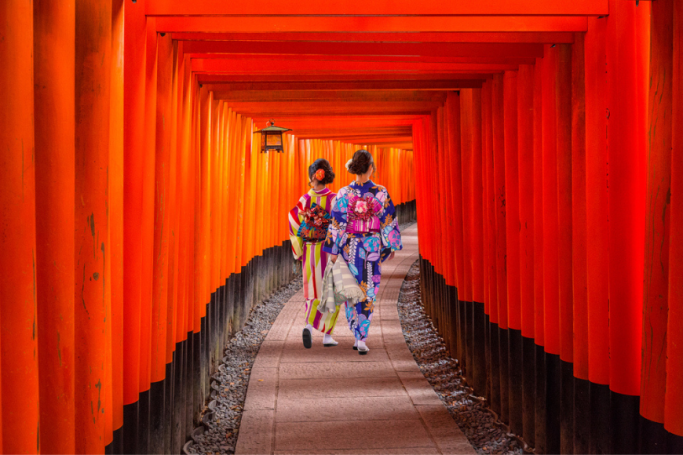The Saudi Riyal is the currency of KSA and is abbreviated SR (Saudi Riyal)
25 September 2013
| Last updated on 27 May 2018
If you are moving to Saudi Arabia soon, or maybe just passing by for a visit, you might be wondering what currency is being used in the Kingdom. The same as every other country, Saudi also has their own currency that is used in the Kingdom.
What currency does Saudi Arabia use?
The Saudi Riyal is the currency of Saudi Arabia. It is abbreviated SR for Saudi Riyal. And is subdivided into 100 Halalas. The Saudi Qirsh is 5 Halalas.
When was Saudi Arabia's currency introduced?
In 1953, the Saudi Arabian Monetary Agency (SAMA) began issuing Haj Pilgrim Receipts for 10 riyals, with 1 and 5 riyals following in 1954 and 1956, respectively. These resembled banknotes and were initially intended for use by pilgrims who exchanged foreign currency for them. However, they became widely accepted in Saudi Arabia and largely replaced silver riyal coins in major financial transactions. Consequently, the Monetary Agency began issuing regular banknotes for 1, 5, 10, 50 and 100 riyal on 15 June 1961. The Pilgrim Receipts were withdrawn on 1 February 1965.
500 Riyal notes were introduced in 1983. 20 and 200 Riyal banknotes were issued in 2000 to commemorate the centenary of the founding of what became the Kingdom of Saudi Arabia. The 5th series of banknotes bearing the face of King Abdullah were issued in 2007.
What does Riyal’s look like?
On May 20, 2007, "the Saudi Arabian Monetary Agency, pursuant to article (4) of the Saudi Currency Law, issued under the Royal Decree No. (6) and dated 1/7/1379H" announced the fifth domination of the Saudi Riyal that features King Abdullah Bin Abdulaziz's picture on all notes except the 500 riyal, which features King Abdulaziz Al Saud. The 100 and 50 riyal notes were released on May 21, 2007. The 10 and 5 Riyal notes followed in June 2007, then the 500 riyal followed in September 2007, and finally the 1 Riyal note completed the series in December 2007. It is expected by the SAMA that the fourth (current) series will take approximately two years to phase out, although a complete removal of the current series require more than two years since the fourth series has been in circulation for well over 25 years. The fourth series which feature King Fahad's picture will remain legal tender under the Saudi Arabian monetary law. The new series have the latest and most advanced security system to prevent from counterfeiting and other similar activities.
These are the banknotes that are currently used in the sixth issue of the Saudi Riyal
- SR 500 - Blue; King Abdulaziz Bin Abdulrahman Al Saud and a picture of the Holy Ka`aba on the front; Holy Mosque in Makkah Al Mukarramah on the back
- SR 100 - Red; King Salman Bin Abdulaziz Al Saud with the Green Dome of the Prophet`s Mosque on the front; The Prophet`s Mosque in Al-Madinah Al-Monawarah on the back
- SR 50 - Green; King Salman Bin Abdulaziz Al Saud with the Al-Sakhra Dome Mosque on the front; Al-Aqsa Mosque in Al-Quds Al-Shareef on the back
- SR 10 - Brown; King Salman Bin Abdulaziz Al Saud with the Palace of late King Abdulaziz in Almoraba Area on the front; King Abdullah Bin Abdulaziz Financial Center in Riyadh on the back
- SR 5 - Purple; King Salman Bin Abdulaziz Al Saud with the Shaybah Oil Field in the Empty Quarter on the front; flowers from the Kingdom of Saudi Arabia on the back
What is the History of Riyals?
The riyal has been the currency of Saudi Arabia since the country came into being and was the currency of Hejaz before Saudi Arabia was created. The Hejaz riyal was based on (though not equivalent to) the Ottoman 20 kuruş coin and was consequently divided into 20 Qirsh. However, although the Hejaz riyal was the same weight as the Ottoman 20 kuruş, it was minted in .917 fineness, compared to .830 fineness for the Ottoman coin. Thus, because the first Saudi riyal had the same specifications as the Hejaz riyal and circulated alongside Ottoman coins, it came to be worth 22 Ottoman kuruş and was consequently subdivided into 22 ghirsh when coins denominated in Qirsh were issued from 1925. This remained the system of currency even though the riyal was subsequently debased to a coin equivalent in silver content to the Indian rupee in 1935.
In 1960, the system was changed to 20 Qirsh = 1 riyal and this was followed in 1963 by the introduction of the halala, worth one hundredth of a riyal. Some Saudi coins still bear denominations in Qirsh but this denomination is no longer commonly used.
What is the history of Riyal coins?
In 1925, transitional copper coins for ¼ and ½ Qirsh (in some parts of the country it's pronounced as girsh) were minted in Mecca by `muhammad ayaan kadri. These were followed, in 1926, by ¼, ½ and 1 ghirsh cupronickel piece, carrying the title "King of Hejaz and Sultan of Nejd".
In 1927, the royal title was changed to "King of Hejaz and Nejd and Dependencies" and coins were issued in denominations of ¼, ½ and 1 ghirsh in cupro-nickel and ¼, ½ and 1 riyal in silver.
In 1935, the first coins were issued in the name of Saudi Arabia. These were silver ¼, ½ and 1 riyal coins which were nearly 50% lighter than the previous issue. Cupro-nickel ¼, ½ and 1 ghirsh were also issued from 1937. In 1946 (AH 1365), many of the cupro-nickel coins were countermarked with the Arabic numerals 65 (٦٥) in what Krause and Mishler describe as "a move to break money changers' monopoly on small coins". Cupro-nickel 2 and 4 ghirsh were introduced in 1957.
In 1963, the halala was introduced and bronze 1 halala coins were issued. This was the only year these coins were struck. Cupro-nickel 5, 10, 25 and 50 halala followed in 1972. These coins are also inscribed with their denomination in ghirsh or riyal (1, 2 ghirsh, ¼, ½ riyal). In 1976, cupro-nickel 1 riyal coins were introduced, which are also inscribed with the denomination 100 halala. Bimetallic 1 riyal coins, also marked 100 halala, were issued in 1999.


















































































































